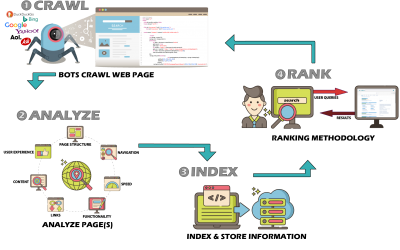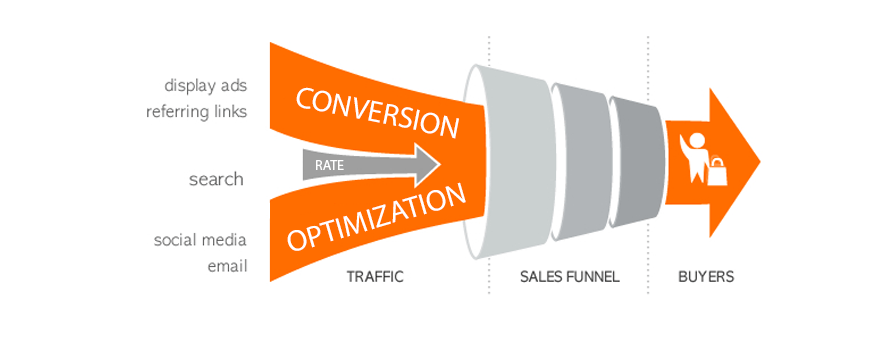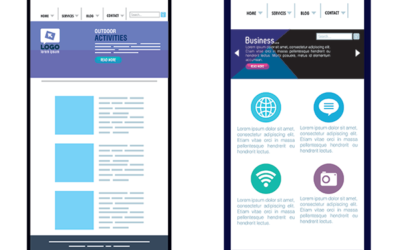It takes less than 10 seconds for a potential customer to decide whether or not your company’s website holds the solution to their business pains. Suppose you’re attempting to attract qualified leads. In that case, your landing page must present three selling points: how you can solve a visitor’s current predicament, how your brand will add value to their lives, and most importantly, why should they pick your product or service above your competitor’s? The best and most efficient way to grab a lead’s attention is by creating a unique value proposition, or UVP. Interchangeable with the term “unique selling proposition” or USP, a unique value proposition clarifies to potential customers what sets your brand apart from other brands within your industry. Typically, a statement placed on your landing page tells customers how your product will alleviate their business pains. In today’s competitive market, potential customers don’t just want to learn about how your product works or how qualified your company is to handle their business needs; they want to know how your product or service will improve their lives.
What is a unique value proposition?
Let’s start with the basics. Coming up with a value proposition is not your chance to present your resume and a list of your company’s qualifications to a potential customer. A unique value proposition is a brief phrase that explains why your product is unique to the customer. Your company’s value proposition introduces potential customers to your brand by clearly outlining your values, how your product works, and why they deserve your business. A compelling value proposition will engage a potential customer in a way that feels familiar. It shouldn’t include technical phrases or jargon commonly used in your industry or ambiguous sentences, generalities or words that sound repetitive.
Most importantly, focus on making promises that you can keep. For example, if your product costs less than a competitor’s similar product, your value proposition should incorporate this fact. A potential customer should agree that your statement is accurate and easy to prove true. Relate to the customer practically, building on a foundation of trust between your brand and customers.
What is the objective of a unique value proposition?
The main goal of your proposition should be to present your company as a leader in your niche in the eyes of potential customers who are not familiar with your brand. For a moment, place yourself in the minds of your customers. Consider the presentation of your product. What is essential to the customer? Why would they choose your product above a competitor’s similar product? How is your product or service most helpful to them?
Try identifying your customers’ pain points:
- Are they overpaying for a product or service they currently use?
- Is the customer looking to reduce business costs?
- Are there quality issues with other providers?
- Are there time sensitive issues that need to be addressed?
- Are productivity issues hindering their daily operations?
- Do they have trouble assigning leads or nurturing low-priority leads?
- Are they able to accurately resolve their own customer’s concerns?
No matter the pain point, your product should make their lives easier. Whether it’s saving customer’s time or improving their bottom line, take the essential aspect of your product or service and let your customers know how you will improve their lives while using the shortest sentence possible. The value proposition is intended to capture a potential customer’s interest, not necessarily sell them on your product with a long list of bullet points. Remember, your website has less than 10 seconds to catch their attention.

What is an example of a unique value proposition?
When you come up with a value proposition, you are making a promise to the customer. In fact, your proposition should pinpoint the primary reason why anyone would want to buy your product or service. The proposition should be easy to understand, explain how the product fulfills a need, and state why it’s superior to other similar offerings on the market. A practical value proposition will even communicate benefits that add value to the offering in the customer’s eyes. Benefits should be the specific qualities about your offering that set it apart from your competitor’s; qualities that not only you should be able to prove as accurate, but that potential customers can discern for themselves.
For example, consider the market for blueberries. There are many companies in the agricultural industry that grow and sell blueberries. That company’s unique value proposition may sound something like: “USDA Certified Organic Blueberries grown by your neighbors in Gwinnett County, Georgia.” But what if a company’s value proposition stated that they grew organic produce and operated as a worker cooperative in a particular region?
Not only does the proposition hold added value to the product (blueberries), but it also informs the customer of the company’s commitment to promoting the health and financial prosperity of their community. In the value proposition stated above, the company uses its statement to target potential customers who will benefit most from buying the product: people who prefer to eat organic produce, and more specifically, customers who support independent businesses over multinational corporations.
For a company operating within the agriculture industry, this unique value proposition serves as an advantage over the competition because it targets a specific niche in an otherwise crowded and highly competitive market. It also asserts its place as a leader in its niche, the natural/organic segment, further promoting trust between brand and customer.
How can I test my unique value proposition?
Two proven methods of testing your unique value proposition are A/B testing and PPC ads. Let’s take an in-depth look at each method and learn how they help you find your company’s best unique value proposition.

A/B Testing
In digital marketing, A/B testing is a growth strategy designed to help you improve your conversion rates. In fact, A/B is one of the fastest ways to test UX and increase your conversions. When you sit down to formulate your company’s unique value proposition, it’s recommended that you draft several versions, reviewing each candidate internally until your team finds the statement that best represents your brand and product. Similarly, when A/B testing your unique value proposition, you are split testing two or more versions of the same variable. In this case, the variable you are testing is your website’s landing page and the conversion rate when using your two different value propositions.
The value of A/B testing your UVP
Each unique value proposition is incorporated into a different version of your website’s landing page and compared between two groups of web users. Each group will be able to view only one version of your landing page. The A/B testing process will allow you to consider which version of your landing page generated more engagement. Some examples of engagement are click-throughs and lead conversions. By A/B testing, you will learn which value proposition visitors responded to the most and what content they prefer to engage with on your website.
PPC ads
PPC ads mean pay-per-click ads and are a popular model of internet marketing. With PPC ads, advertisers pay a fee each time an ad is clicked. You are essentially buying visitors to your website rather than earning visitors organically through SEO. Search engine and social media advertising are two of the most popular forms of PPC. You can bid for ad placement on Google or Facebook’s search engine sponsored links when potential customers search for keywords related to the products or services that you offer. For example, if you bid on the keyword “tax grievance,” your ad might appear in the top spot of the search engine results page or SERP.
The value of testing your UPV with PPC
Using PPC to test your unique value proposition will split test ads with separate value propositions to target the same customers. The goal of this method is to see which ads generate a higher click-through rate (CTR). Although this method doesn’t guarantee higher sales conversions, you can funnel traffic directly to your landing page. Ultimately, a PPC advertising strategy will help you determine which value propositions attract the most customers.
Do you need help testing your unique value proposition?
Even if you understand your niche or have a product ready to roll on the market, your company needs to implement a unique value proposition that engages customers who may not understand just how your product will revolutionize their lives. Using A/B and PPC ads to test your UVP is a great way to find the right message to attract potential customers. But more often than not, the testing process can distract you from focusing on the daily operations of your business. If you need help testing your value proposition, call 631-743-9666 and find out how UnReal Web Marketing can help you generate more quality leads.
Related SEO Articles
Seven Reasons Why Your Business Should Go SEO
Search Engine Optimization (SEO) is an important marketing strategy many businesses use to drive traffic to their...
What is Conversion Rate Optimization?
Conversion rate optimization (CRO) is the systematic process of increasing the percentage of website...
Top Mistakes That Could Impact Your Responsive Mobile Conversion
Almost ten years ago, nearly everybody who was accessing the web was on a desktop computer. In 2006, only two screen...




